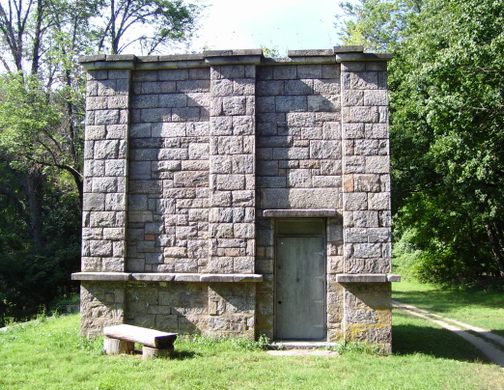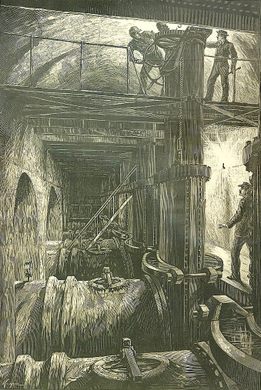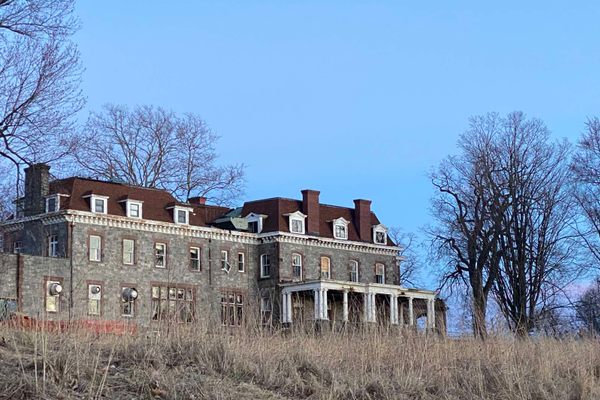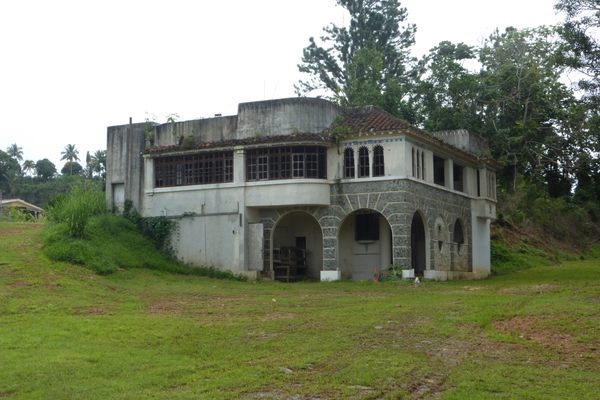Old Croton Aqueduct Trail
This once-grand marvel of engineering is now 41 miles of scenic hiking trail.
The Old Croton Aqueduct Trail is a popular destination for New York City hikers; it’s fairly straight, isn’t steep, and is close by public transit. But this trail is actually the remains of one of New York’s most ambitious early engineering projects.
After the Revolutionary War, Manhattan Island faced a fresh water crisis as the population swelled and the streams and ponds that had previously supplied the growing city were quickly overwhelmed. In the 1830s, after fighting off epidemics of water-borne diseases like cholera, the city stepped in, building an aqueduct that drew water from the Croton River, over 40 miles to the north. Powered entirely by gravity, the aqueduct carried water in an eight-foot-wide iron pipe from the Croton River down along the Hudson, across the Harlem River, and into Manhattan, where the water was collected in a pair of reservoirs, one at 42nd Street and one at 78th, before being pumped out to an increasingly thirsty city. Over 35 million gallons flowed through the aqueduct daily, with such force that a decorative fountain fed by the aqueduct gushed water 50 feet into the air.
For most of its route the aqueduct pipe ran underground. Workers dug ditches along the route, carefully keeping the pipe on a gradual slope that dropped only 13 inches per mile. Every few miles they also built vents into the pipe to allow for air circulation, which alleviated excess pressure and kept the water as fresh as possible. A handful of “weir” stations also dotted the path—structures that let workers access the tunnel, to either alter the water’s flow or do other repair work.
Within only 40 years, however, the pace of the city’s growth had already outstripped the capacity of the aqueduct to adequately supply New York with drinking water, and the city added a second, even bigger aqueduct in 1890, which supplies a portion of the city’s water even today. The 42nd Street reservoir was drained in 1911 to make room for the New York Public Library’s main branch, and the other was drained in 1940 and filled in to create Central Park’s Great Lawn. The aqueduct itself stayed in service another fifteen years longer before being sealed in 1955.
Created for hikers in 1968, the Old Croton Aqueduct Trail largely follows the path of the original aqueduct—at times even running directly on top of the underground pipe. Some of the original stone vents and weirs still loom along the trail as well, and in some locations—chiefly upstate— park rangers even offer tours of the structures. In New York City itself, the trail runs through Van Cortlandt Park before disappearing among the city streets, where it can be hard to spot—but three gatehouses, which also offered workers access to the tunnel, are strewn along Amsterdam Avenue in Harlem, marking the path of the Old Croton Aqueduct’s final stretch.
Know Before You Go
Take the Metro-North Hudson line to Hastings-on-Hudson, Dobbs Ferry, or other towns along the route and walk uphill to the trail. Maps of the trail are available from Friends of the Old Croton Aqueduct: http://aqueduct.org. The trail runs from Croton-on-Hudson in Westchester County to Van Cortlandt Park in the Bronx. A visitor's center with exhibits, a restroom, drinking fountain, and knowledgeable volunteers can be found at the restored Keeper's House in Dobbs Ferry open on Saturdays and Sundays from 1 p.m. to 4 p.m. Frequent walking tours and opportunities to descend into the Ossining Weir offered by the Friends of the Old Croton Aqueduct. Patches and certificates are awarded to those who finish the Westchester (26 miles) or the entire trail (41 miles).

























Follow us on Twitter to get the latest on the world's hidden wonders.
Like us on Facebook to get the latest on the world's hidden wonders.
Follow us on Twitter Like us on Facebook